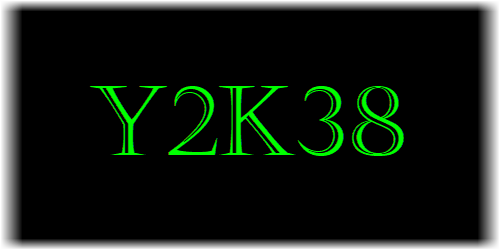What is the Year 2038 Problem all about? Is it like Y2K?
Seventeen years after the concerns raised by the Y2K bug across the globe; the world is now worried about a new problem. This is called the Year 2038 Problem, and there is a lot of confusion around this problem. People are wondering if the Y2K38 problem is similar or worse than Y2K. What will happen in 2038? Some assumptions say that it could cause more damage than Y2K. But, is it all true? Let’s find out.
The Y2K problem
The world went pretty numb when the year 2000 was closing in. It was not merely the change in all four digits, but it also beckoned major problems for the software and programs developed during the era from the 1960s to 1980s.
Those who have forgotten about Y2K, or are still unaware of it; Y2K was a computer bug. The bug would have caused problems for the software and computer programs after the date December 31, 1999. Y2K is also called as the ‘millennium bug’, as the letter k stands for the kilo (used to represent the number 1000); thus ‘2k’ representing the Year 2000.
The Y2K bug was a problem with dates, as the computer programs developed during the 20th century were using the two-digit code for the year. For example, for the year 1978, 19 was not considered in the date. Only the last two-digits; i.e.,, 78 used to represent the year. The reason behind the short form of dates was costly data storage of that time. However, this system of dates wasn’t going to work from January 1st, 2000. Engineers realized that the programs and software may not interpret 00 as 2000, but as 1900. Thus, the date January 1st, 2000 would be interpreted as January 1, 1900, by the computer programs. It was speculated that the systems that rely on precise calculation of dat would definitely fail due to this incorrect interpretation.
However, when the Year 2000 actually approached, there were very few and negligible problems faced by the computer programs and the fields that were dependent on those. Major disarray was avoided by simply changing the year field to 4 digits instead of 2 digits. Thus at the end, the whole Y2K problem turned out to be less disastrous than it was anticipated.
What is the Year 2038 Problem
To understand the gravity of Y2K38 or the Year 2038 problem, it is important to know what exactly it is.
It is so called, because the Year 2038 problem will occur on March 19, 2038. It is speculated that the Y2038 problem will occur due to limitations of 32-bit processors and the systems that run on them.
Researchers say that at 03:14:07 UTC on March 19, 2038, the systems running on 32-bit processors won’t be able to cope with the date and time change. The computers started counting the time in seconds from January 1, 1970. But the 32-bit systems have the capacity to count only up to the number 2,147,483,647; thus, for the time, it can calculate those many seconds only. And at 03:14:07 UTC on March 19, 2038, the counting will reach its ultimate capacity of 2,147,483,647 seconds.
So the question is, what will happen once the clock of 32-bit systems will go beyond its threshold of 2,147,483,647 seconds? Some speculate that these computers will simply crash and stop working altogether. Really!?
Of course not! For the next 20 years (i.e., till the year 2038), there will many changes witnessed by the computer and software industry. It is said that data security professionals will have to change the way they deal in areas such as national security, SSL encryption, Internet of Things devices and Cryptocurrency.
The simplest solution provided by the data scientists for the Year 2038 problem is to upgrade the systems to 64-bit processors. Simply put, the 64-bit machines will have the huge capacity to count up to 9,223,372,036,854,775,808; a count that will certainly not get over in near future.
In fact, many of the latest PCs and systems run on 64-bit. Microsoft’s Windows machines run on 64-bit version ever since the Windows XP Professional 64-bit was released in 2005. Even, Apple’s OS X desktop software is running exclusively on 64-bit after Apple released it’s Mac OS X 10.7 Lion in 2011. Though the Unix systems that power the web servers and other backend hardware are still using 32-bit systems; most of them can be upgraded to 64-bit systems over time.
The curious case of Gangnam Style video
Upgrading the systems to 64-bit processors is a proven fact; because the same technique was used by YouTube in December 2014. On December 3rd, 2014, South Korean pop-star Psy’s video ‘Gangnam Style’ broke all the records of views. So much so, that the number of views exceeded 2,147,483,647. But, YouTube being run on 32-bit processors, was not able to count beyond this number and the website crashed. The engineers at YouTube were able to quickly fix the issue by upgrading the system to 64-bit.
Conclusion
On a concluding note, the technique used by YouTube can be used to save other systems before the Year 2038. Until the year 2038, there is plenty of time to upgrade the systems and make the necessary changes so that the Year 2038 problem does not create any dangers to the software and programs.
The only computers that can face some issues due to the Year 2038 problem are those with embedded systems. Many of these embedded systems are used in systems with long life, such as transportation systems, some isolated computer systems, and stability control systems. As a result, the embedded systems need a complete replacement as their software cannot be upgraded.
So ultimately, there is no need to panic because of the Year 2038 problem!
Source:
http://www.thewindowsclub.com/year-2038-problem?windowsclub-2038=&ad_id=505179&share-ad-id=1
@cyberwatch666
Resteem. Upvote. Follow.
